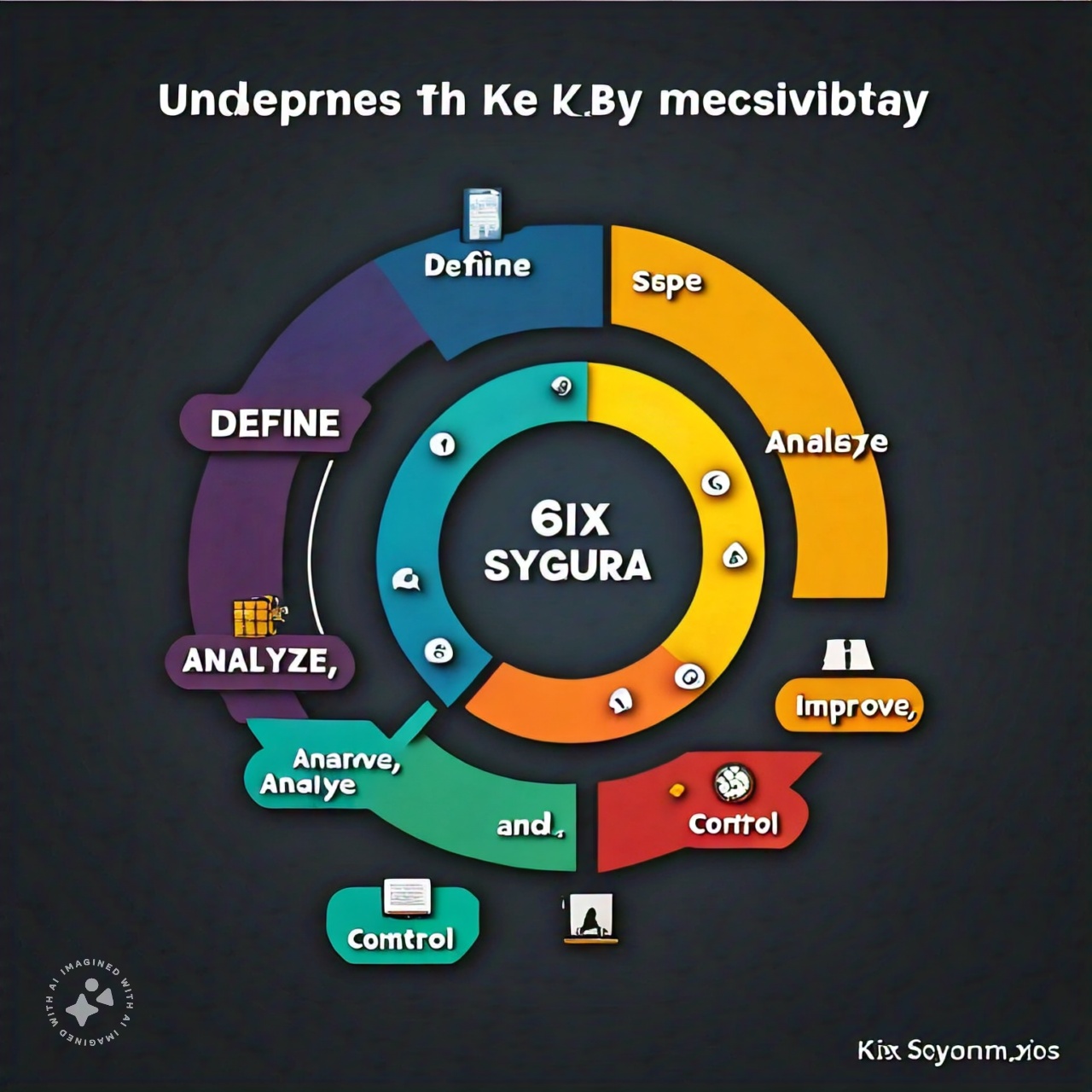Six Sigma is a robust methodology that empowers businesses to streamline operations, minimize errors, and achieve remarkable results. At its core lies a structured, data-driven approach known as DMAIC. Let’s delve into the five crucial steps in the Six Sigma process, which will equip you to tackle challenges and propel your organization forward.
1. Define: Charting the Course
The initial step involves meticulously defining the problem you aim to address. This entails crafting a clear, concise problem statement that captures the issue’s essence. Next, establish your project goals by outlining the desired outcomes. Consider the impact on customers, cost reduction targets, or quality improvement benchmarks. Defining the process, where you map out the current workflow in detail, comes next. This can be achieved through flowcharts or process maps, providing a visual representation of each step. Finally, identify your internal and external customers and understand their specific requirements. Clearly defining these elements lays a solid foundation for subsequent steps in the Six Sigma process.
2. Measure: Establishing the Baseline
Once the problem and project goals are well-defined, it’s time to gather data. This phase focuses on measuring the current performance of the process. Identify the key metrics that best reflect the success or failure of the process in achieving the desired outcomes. Data collection methods can include surveys, observations, or historical data analysis. Crucially, ensure the data collected is accurate and reliable. The aim is to establish a baseline – a quantifiable understanding of the current state – a benchmark for measuring future improvements.
3. Analyze: Unveiling the Root Cause
With a wealth of data in hand, the focus shifts to analyzing the information to identify the root cause of the problem. Statistical tools and techniques come into play during this phase. Techniques like cause-and-effect diagrams or scatter plots can help identify potential relationships between variables. Data analysis allows you to pinpoint the factors most significantly impacting the process and hindering the achievement of goals. By uncovering the root cause, you gain a deeper understanding of the problem, paving the way for practical solutions.
4. Improve: Implementing Change
Armed with the insights gleaned from the analysis stage, it’s time to brainstorm and implement solutions. The Six Sigma process encourages creative problem-solving techniques to generate potential solutions. Consider process redesign, technology implementation, or employee training as possible avenues for improvement. Once promising solutions are identified, pilot testing is crucial. This involves implementing the solution on a small scale to assess its effectiveness and identify any unforeseen challenges. Refine the solution and prepare for full-scale implementation based on the pilot test results.
5. Control: Ensuring Sustainability
The final step focuses on ensuring the long-term effectiveness of the implemented solution. This involves establishing control mechanisms to monitor the process and prevent regressions. Define clear metrics and data collection methods to track the process performance after implementing the solution. Regularly analyze the data to identify deviations from desired outcomes and take corrective action if necessary. Standardizing the improved process ensures consistency and prevents future regressions. By implementing effective control measures, you guarantee the sustainability of the improvements achieved.
Leveraging Six Sigma for Success at AmrepMexico
Having explored the critical steps in the Six Sigma process, let’s delve into how AmrepMexico can be your partner in achieving remarkable results. Our certified professionals have extensive experience implementing Six Sigma across diverse industries. We offer a range of services tailored to your specific needs, empowering you to:
-
Identify Bottlenecks: Our experts can help you pinpoint areas within your operations that are hindering efficiency and productivity. Through a collaborative approach, we’ll work with you to define the problems that stand in the way of achieving your goals.
-
Harness Data-Driven Insights: AmrepMexico equips you with the tools and expertise to gather and analyze critical data. We’ll guide you in interpreting the data to uncover valuable insights illuminating the root causes of inefficiencies.
-
Develop Effective Solutions: Our team fosters a creative problem-solving environment, generating innovative solutions to address the identified challenges. We’ll partner with you to evaluate potential solutions and select the most impactful action.
-
Implement and Standardize Improvements: AmrepMexico provides comprehensive support in implementing the chosen solution. We’ll help you establish control mechanisms to monitor performance and ensure the long-term sustainability of the improvements achieved.
-
Cultivate a Culture of Continuous Improvement: Our training programs equip your workforce with the knowledge and skills required to embrace Six Sigma principles. We foster a culture of continuous improvement, empowering your team to identify and address challenges proactively.
Conclusion
The Six Sigma process offers a robust methodology for achieving operational excellence. By partnering with AmrepMexico’s experienced professionals, you gain the expertise and support required to harness the full potential of Six Sigma. Let us guide you towards streamlined operations, improved quality, and superior business results. Contact AmrepMexico today to embark on your journey towards Six Sigma success!
FAQs
-
Can AmrepMexico help me implement Six Sigma?
Absolutely! AmrepMexico offers comprehensive Six Sigma training and consulting services to empower your organization to leverage this robust methodology.
-
How long does it take to complete the Six Sigma process?
The time required to complete a Six Sigma project can vary depending on the problem’s complexity. However, AmrepMexico’s experienced professionals can guide you through the process efficiently and effectively.





